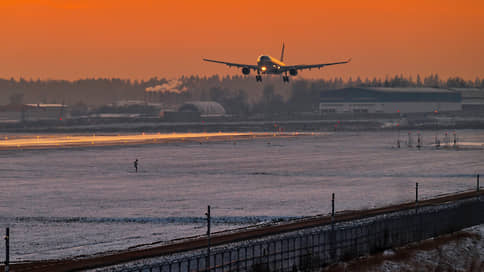UAV manufacturers are asking to be allowed to inspect airfield equipment
[ad_1]

According to Kommersant, manufacturers of unmanned vehicles have proposed allowing the use of drones to check landing and navigation systems at airfields. Currently, such checks can only be carried out on airplanes; the market for such services is estimated at 1 billion rubles. annually. The State ATM Corporation prepared the corresponding amendments four years ago, but there has been no movement on them yet. According to Kommersant’s interlocutors in the industry, the use of drones is 50% cheaper than airplanes, which is proven by practice at European airports.
As Kommersant has learned, drone manufacturers in the Russian Federation have proposed allowing the use of drones to inspect radio equipment at airfields – in particular, landing and navigation systems, locators, and direction finders. Vitaly Munirov, general director of the Kursir company from NTI Aeronet, which is developing such drones, told Kommersant about this.
Currently, checks are only carried out on airplanes. The customer of the work is the State Corporation for Air Traffic Management (SC ATM), the market volume is about 1 billion rubles. in year. The market is divided between two performers – Flight Checks and Systems (as of 2021, part of the ATM Group of Companies) and Aerocontrol (a branch of the ATM Group of Companies). In addition, the former structure of the ATM Group of Companies, Nimbus Airlines, works with experimental aviation airfields.
The cost of a flight hour for an aircraft with a laboratory, according to Kommersant sources, is about 200 thousand rubles. Drone operation will be at least half the price, they note. Drones check the settings of radio equipment and lighting equipment before testing them on laboratory aircraft, which reduces the overall number of aircraft checks. UAVs are used at European airfields: in Spain, France, Germany, the Czech Republic, and Norway. Skyguide reported that the use of copters at Swiss airfields has reduced the number of inspections by half.
The proposal to allow the use of unmanned aircraft systems (UAS) in flight inspections has been discussed by aviation authorities and the market since 2019. In November 2020, Igor Moiseenko, ex-general director of the ATM Group of Companies, sent for approval to the Federal Air Transport Agency draft amendments (Kommersant has it) to the Federal Aviation Rules (FAR), which allow the use of UAS at airfields. According to a Kommersant source, the project required additional changes to the Air Code and, after revision, was sent to the Ministry of Transport. There has been no movement on it since then. At the time of publication, Kommersant did not respond to the ATM Civil Code. Deputy head of the Federal Air Transport Agency Andrei Potemkin confirmed to Kommersant that “the draft FAP regulating the conduct of flight inspections using laboratory aircraft, including those based on unmanned aircraft, has been prepared.”
Kursir developed the BAS-LP-M in 2021 according to the terms of reference agreed with the aviation authorities, says Vitaly Munirov. ATM specialists from the Group of Companies took part in the acceptance tests. In February 2022, the company won a tender from the Spanish air navigation services provider Enaire for three years of maintenance of flight radio equipment together with local partner Cartronic Memory SA. In March 2022, the agreement was canceled due to sanctions. Now, according to Vitaly Munirov, the company is negotiating with air navigation service providers from countries friendly to the Russian Federation, primarily in Latin America. At the same time, the manufacturer does not have confidence in export opportunities due to export restrictions. In July 2023, Kursir entered into a contract to supply its UAS to a customer from Chile and in October requested permission from the Federal Service for Technical and Export Control (FSTEC). In February, according to Mr. Munirov, FSTEC refused Kursir “due to the risks of re-exporting products to third countries to the detriment of the state interests of the Russian Federation.” FSTEC did not respond to Kommersant’s request.
International practice confirms that the use of drones in airfield areas has no technical restrictions, points out Andrey Patrakov, founder of the flight safety service RunAvia. At the same time, the ban on the use of drones in most regions and the periodic introduction of the Carpet plan at airports, he says, “make it difficult to bring technologies to market.” Legislative standards do not keep pace with market development, he believes, which is obvious from the pace of equipment certification (one BAS-200 has been certified in the Russian Federation). But taking into account the financial state of the ATM Civil Code and the reduction in budget funding, the admission of drones to flight checks seems inevitable to the expert.
[ad_2]
Source link





